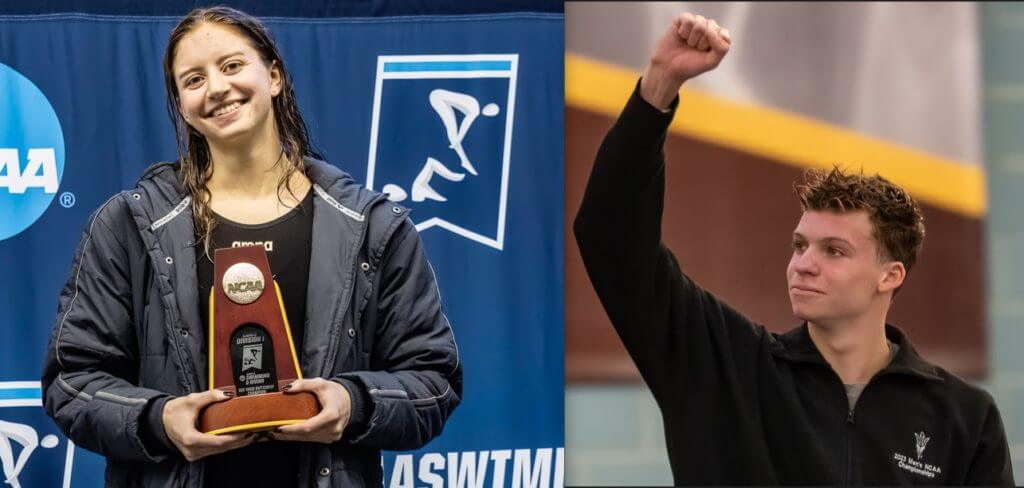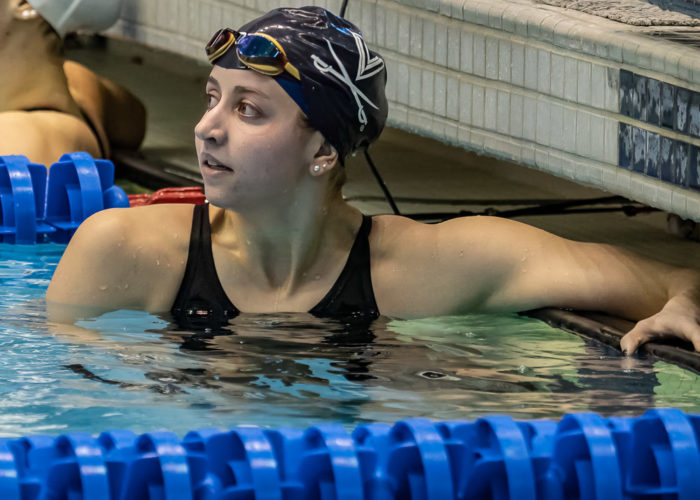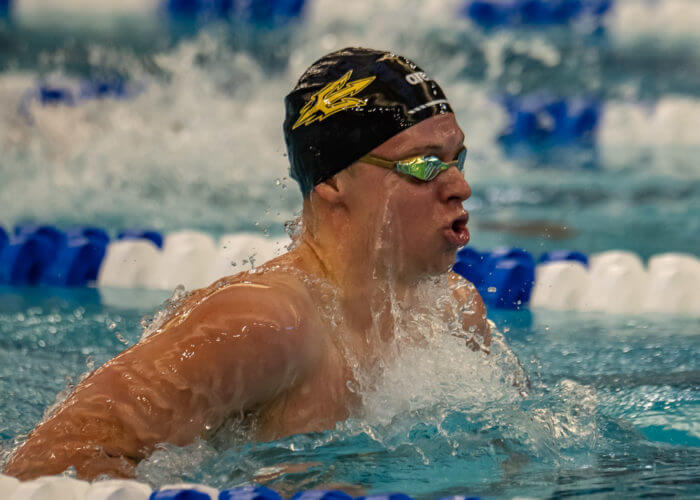Kate Douglass, Leon Marchand a Unique, Elite Combo of Dominance, Versatility in NCAA History

Two years ago, Kate Douglass and Leon Marchand were budding stars full of potential.
They were on the rise, yet so were a lot of swimmers.
Two years later, they have become dominating forces in NCAA swimming never seen before.
There have been very few swimmers at their level in NCAA history as far as the dominance and the versatility, but the sport has never seen male and female swimmers mirroring each other at the same time in college like this.
The versatilty and dominance has them in the middle of the debate over who is the greatest college swimmer in history.
Marchand could have entered the meet the favorite to win seven different events, spanning three strokes. He won the 200 IM, 400 IM and 200 breaststroke in stunning NCAA record times.
Douglass proved she could dominate in any stroke, any distance last year when she won the 50 free, 100 fly and 200 breaststroke. She followed that up with repeat titles in the 100 fly and 200 breast, but chose the 200 IM and broke the NCAA record in that event to win three individual titles again, leading Virginia to a third consecutive team title.
Who in college history has really dominated like this? Obviously, Tracy Caulkins‘ name immediately comes to mind. She did it all, and was once an American-record holder in all strokes.
The vaunted Stanford dynasty was loaded with epic talent – Katie Ledecky, Simone Manuel, Ella Eastin, Janet Hu, Ally Howe – but they all stayed in their wheelhouse events. After all, there was a dominant teammate in just about every event, so why stretch it to something outside the box, when it was in the middle of someone else’s box.
On the women’s side, there are very few NCAA swimmers who have shown this kind of dominance and versatility that could be favored in five-plus events.
Cal’s Natalie Coughlin absolutely did. She was a powerhouse in the backstroke, butterfly and sprint freestyle events, including the 200 free. That’s seven.
Cal’s Missy Franklin won NCAA titles in both backstroke events, the 200 free and was an elite IMer and 100 freestyler. That’s five.

Kate Douglass. Photo Courtesy: Peter H. Bick
That is the list for the women. There have been plenty of dominant swimmers – Ledecky, Manuel, Lilly King, Allison Schmitt, Olivia Smoliga, Maggie Mac Neil, Jenny Thompson, Dana Vollmer, and Kara Lynn Joyce – all dominated at the NCAA level, but in 1-2-3 events – perhaps four – but not five-plus. Douglass’ teammates Alex Walsh and Gretchen Walsh are about in the 3-4 range but not if Douglass was swimming those events.
The men’s list isn’t any longer. Michael Phelps didn’t swim for a college team because he was already a professional, so he’s out of the conversation.
Florida’s Caeleb Dressel absolutely was unstoppable. He broke NCAA records in the 50 free, 100 free, 100 fly and even for a time held the mark in the 100 breast and 200 IM. He probably would have been the favorite in a 200 free as well, meaning he could have been the favorite in six-plus races.
Indiana’s Mark Spitz won NCAA titles in a plethora of events and would definitely have been favored in more than five.
That is it – plus Kate Douglass and Leon Marchand.
Cal’s Matt Biondi won a ton of NCAA titles, but they were all in the 50, 100 and 200 freestyle events. Florida’s Ryan Lochte won NCAA titles in three events as did several dominant swimmers like Michigan’s Tom Dolan and Tyler Clary. Some flat out dominated one stroke like Cal’s Ryan Murphy and Nathan Adrian. This group could have perhaps been favored in four events with Biondi possibly reaching five.

Leon Marchand. Photo Courtesy: Peter H. Bick
As dominant as all swimmers mentioned have been, in the NCAA, Douglass and Marchand have only been matched in dominance and versatility by Coughlin, Franklin, Dressel and Spitz – and none of them swam at the same time.
Marchand said after winning the 200 IM that going out fast in the first half will “change the sport.” In fact, it is the things that he and Douglass are able to do that are changing the sport.
More young swimmers are seeing the success these elite swimmers are having in so many different events.
That could add up to a generation of versatile swimmers ready to add their names to this list, now led by Kate Douglass and Leon Marchand.




You may be confusing Missy Franklin (not a dominant IM’er, not even a Top 25 SCY IM’er) with either Ella Eastin (3:54.60, 400 IM American-NCAA record) or Katie Ledecky (3:56.53, 400 IM Pac 12 meet record). Eastin’s and Ledecky’s respective 400 IM SCY marks (which eclipsed Katinka Hosszu’s 400 IM college marks) have stood now for five years, and both Eastin and Ledecky certainly did NOT stay in a NCAA one-event or one-stroke “wheelhouse” — both belong in the dominant and versatile categories. Ledecky broke American records 11 times, NCAA records 15 times, and NCAA Championship meet records 6 times in just two years of NCAA swimming while winning 8 NCAA titles, and was the first swimmer in 30 years (since Caulkins’ day) to win the Honda Cup in her Freshman year. Ledecky swam freestyle events 100-200-500-1000-1650 (another form of versatility) and the aforementioned 400 IM in her record-breaking fashion while being named the top NCAA student-athlete across all Div I sports. Eastin, now a student at Stanford Medical School, won 12 NCAA titles and hit the podium four other times, dominating butterfly, IM, and also freestyle as a key leg in multiple NCAA freestyle record-setting relay titles (both 4×100 Free and 4×200 Free) for a Stanford team that won National Team titles three years in a row–and like Ledecky finished her NCAA career with American and NCAA records in at least four events (200 IM, 400 IM, 200 Fly, Free relay events).
One can make the argument that many NCAA swimmers of this era (and especially Ms. Douglass) are essentially swimming but one stroke most of the time–underwater kicking.